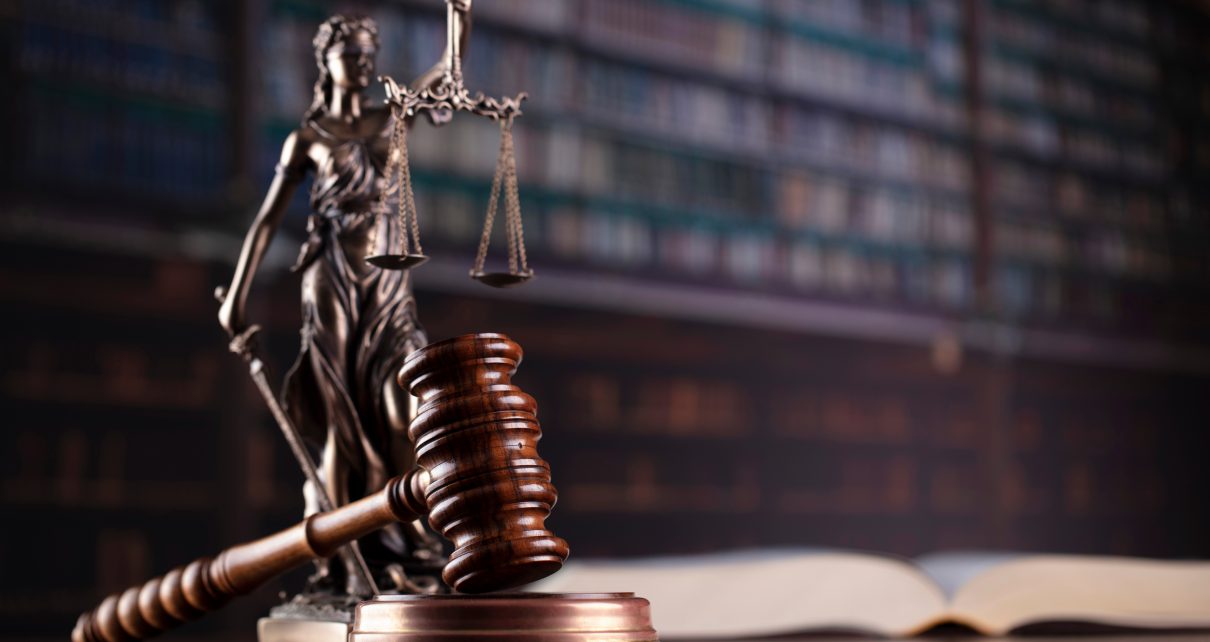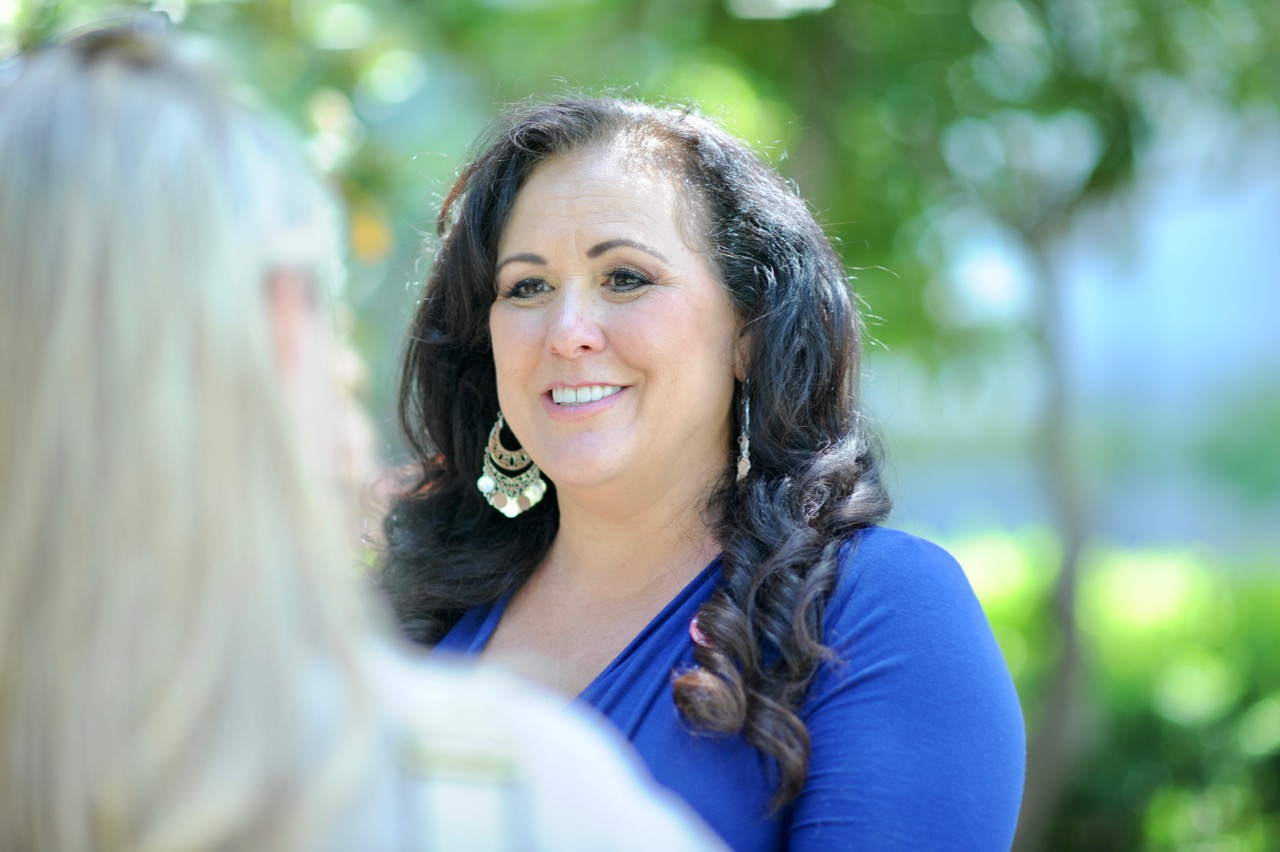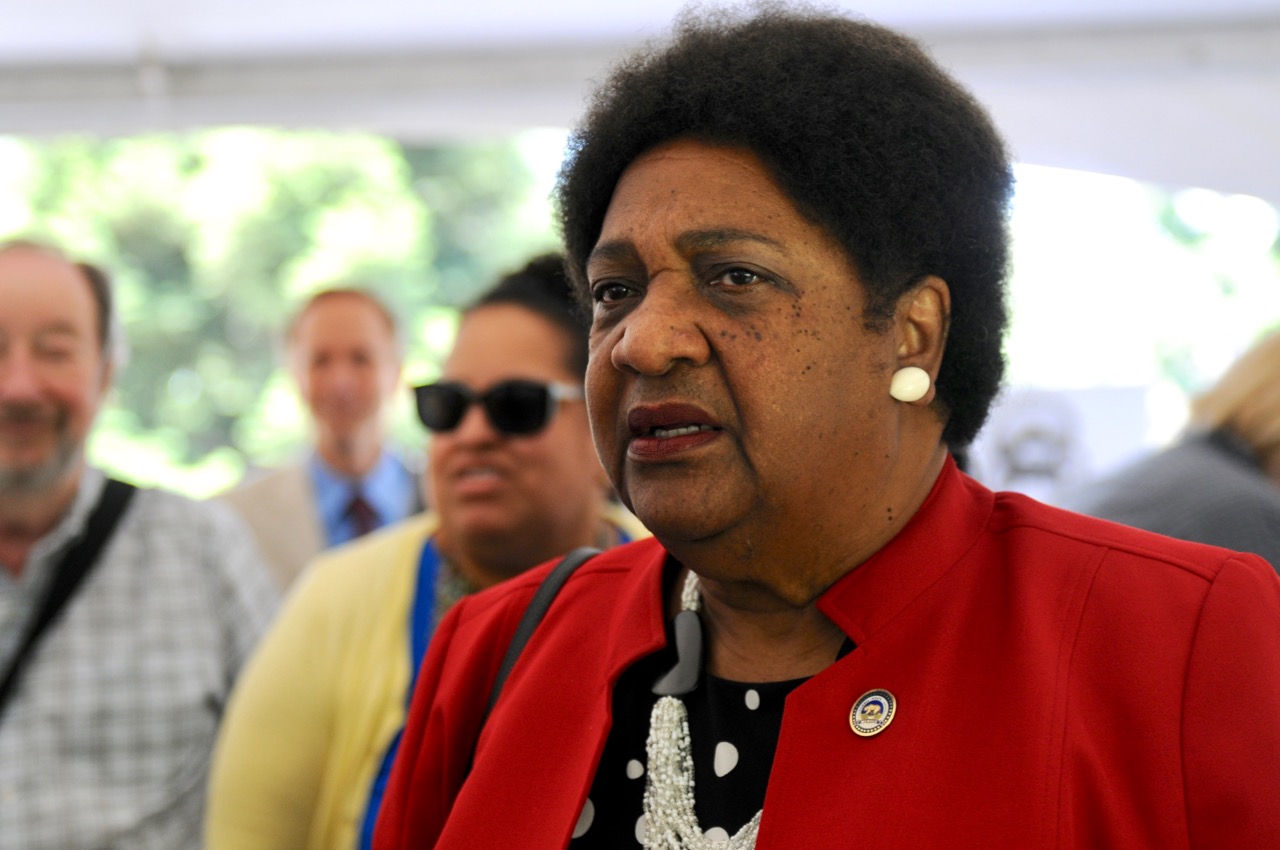
Judge's gavel on courtroom background. Law and justice. (Photo: Zolnierek, Shutterstock)
SCOTUS Hears University Affirmative Action Cases
Implications for California Private Institutions and Beyond
By Martin Marks, November 14, 2022 2:32 am
This is Part II of a series on two U.S. Supreme Cases which will decide if racial preferences in college application acceptances will be allowed to continue at publicly funded schools.
In February of this year I wrote that the United States Supreme Court had agreed to hear two cases—Students for Fair Admissions v. President & Fellows of Harvard College and Students for Fair Admissions v. University of North Carolina, that would revisit the controversial practice of using racial preferences as criterion for admissions to college campuses. Oral arguments before SCOTUS were heard Oct. 31.
Interestingly, one university (Harvard) is private, while the other (UNC) is public. Both receive public funds for operations. And as was reported in February, the State of California–or more aptly, its voters, seemingly had settled the issue of using racial (and gender) preferences for admissions to public institutions by virtue of the 1996 referendum Proposition 209 which held that “The state shall not discriminate against, or grant preferential treatment to, any individual or group on the basis of race, sex, color, ethnicity, or national origin in the operation of public employment, public education, or public contracting.” An effort to repeal Prop. 209 failed in 2020 with the decisive defeat of Proposition 16.
So, other than rendering moot and thwarting any further efforts to reverse Prop 209, it would seem that these argued cases pending decision would have limited if any impact on California public institutions. Yet, California private colleges and universities that receive public funds—and they are numerous–are on edge as the SCOTUS decision will significantly impact their diversity on campus goals.
Of note, at the time SCOTUS agreed to hear the cases, the newest Associate Justice Ketanji Brown Jackson had not yet been seated on, let alone been nominated to the court. However, President Joe Biden had already pledged that he would only consider a black woman as his first nomination to the high court. As this was arguably an example of racial preferences in and of itself, I pondered whether the new Associate Justice would recuse herself from these or any other cases involving affirmative action. Almost, but not quite.
Justice Brown Jackson did in fact recuse herself from one of the two cases, but not for reason that she was the beneficiary of Affirmative Action in attaining her position on the court. Rather, at one time she sat on the Harvard Board of Overseers and has hence separated herself from hearing and ultimately deciding on one of the two cases—which are essentially joined together.
In addition to the two attorneys representing the schools in these cases, U.S. Solicitor General Elizabeth Prelogar of the Biden administration joined in support of retaining racial preferences in admissions to colleges and universities.
The oral arguments before the court on October 31 followed fairly predictable themes and patterns along conservative/liberal, or more aptly originalist constitutionalism/living constitutionalism lines. And with the High Court now skewed 6-3 toward conservatives, it is perhaps easy to see which direction these cases and the fate of Affirmative Action on campus are heading. Yet, we could, as has happened with so many previous landmark cases, be surprised. Some of the comments from the more conservative justices appear to offer an end-run around an ultimate decision that outlaws racial preferences in college admissions.
At least three of the more conservative justices (John Roberts, Bret Kavanaugh and Amy Coney Barrett) emphasized that previous court decisions upholding the use of racial preferences in certain instances did so as a temporary measure with an “end point” in mind.
Kavanaugh said the court had previously opined that “racial preferences are potentially dangerous and must have an end point.” He went on to ask, “Are we there yet?”
Coney Barret asked of the attorney representing UNC, “Would you defend this in 2040?”
Along these lines, Chief Justice Roberts added, “It never ends. Because universities have held that race matters.”
On the other end of the political spectrum liberal Associate Justice Elena Kagan said, “….the nation’s top universities need racial diversity on campus. These schools are pipelines to leadership in our society. I thought that part of what it meant to be an American is that our institutions are reflective of who we are in all our variety.”
Justice Kagan makes a reasonable and surely heartfelt argument here, yet hardly a constitutional one.
Newly minted Associate Justice Brown Jackson took an interesting stance as she posed the hypothetical situation where two students wished to honor their “family legacy” as consideration for acceptance. One student could tout a long line of family members who proudly attended the school, while without racial preferences a minority applicant could not state as part of their experience that because the student’s ancestors were slaves “they never had a chance to attend this venerable institution.”
She went on, “Now as I understand your no-race-conscious admissions rule, these two applicants would have a dramatically different opportunity to tell their family stories and to have them count.”
No doubt compelling, Justice Brown Jackson. Problem is, the U.S. Constitution and U.S. laws are silent on legacy applicants to colleges and universities, but fairly clear on race. Associate Justice Neil Gorsuch reminded the court and those before it, “The Civil Rights Act of 1964 states that universities receiving federal funds may not discriminate based on race or ethnicity.”
And make no mistake. If one student is the recipient of a benefit (admission) based upon race, then another student otherwise qualified for acceptance yet turned away is being discriminated against—because of race.
Yet, it seemed that the conservative justices in their comments and questions were all but advising the attorneys representing the two universities on how to accomplish their diversity goals without actually using race as a criterion for admissions. Arguments were put forth to perhaps employ “race-conscious” criteria such as targeted recruitment in financially deprived areas with concomitant financial aid packages which ultimately would enhance minority matriculation at the university level.
And while the liberal court justices raised the experiences in California where minority enrollment at UC schools fell precipitously following the 1996 Prop 209 vote, the conservatives countered by pointing out that UC schools have invested significant resources to the tune of half a billion dollars since the passage of Prop 209 on diversity measures in lieu of outright racial preferences with varying levels of success. While the UC universities are still lagging, the racial and ethnic makeup of the 23 Cal State campuses mirrors that which can be found in California’s population.
Proponents of using racial preferences in admissions aver that this is the best way to guarantee the kind of diversity they seek.
And while the justices seemed to agree with many in education that a more “holistic review” using criteria other than grades and test scores to evaluate college applicants is the most fair, we’ll see just how far a SCOTUS decision will allow universities to go as they employ other modalities as proxies for outright racial preferences in order to achieve diversity. Chief Justice Roberts pondered whether students would receive special consideration by simply writing about their experiences as an African American. Roberts asked, “If all of a sudden the number of essays that talk about the experiences being an African American in society rises dramatically, will the consequences of that be the same as giving students credits for being Black?”
The justices will no doubt struggle in their deliberations as they attempt to define what exactly is a “race-neutral” admissions policy if, or more likely when they overturn previous decisions that have allowed Affirmative Action in the college admissions process.
While the justices of the Supreme Court may have already privately deliberated and reached a decision, that decision may not be released for many months. And when it is released part III of this California Globe series is sure to follow.
- Vice President Vance Visits The Golden State - February 22, 2025
- Is DEI Ready To DIE? - January 4, 2025
- Just How Effective Was The Abortion Debate in The 2024 Election? - November 18, 2024





One thought on “SCOTUS Hears University Affirmative Action Cases”